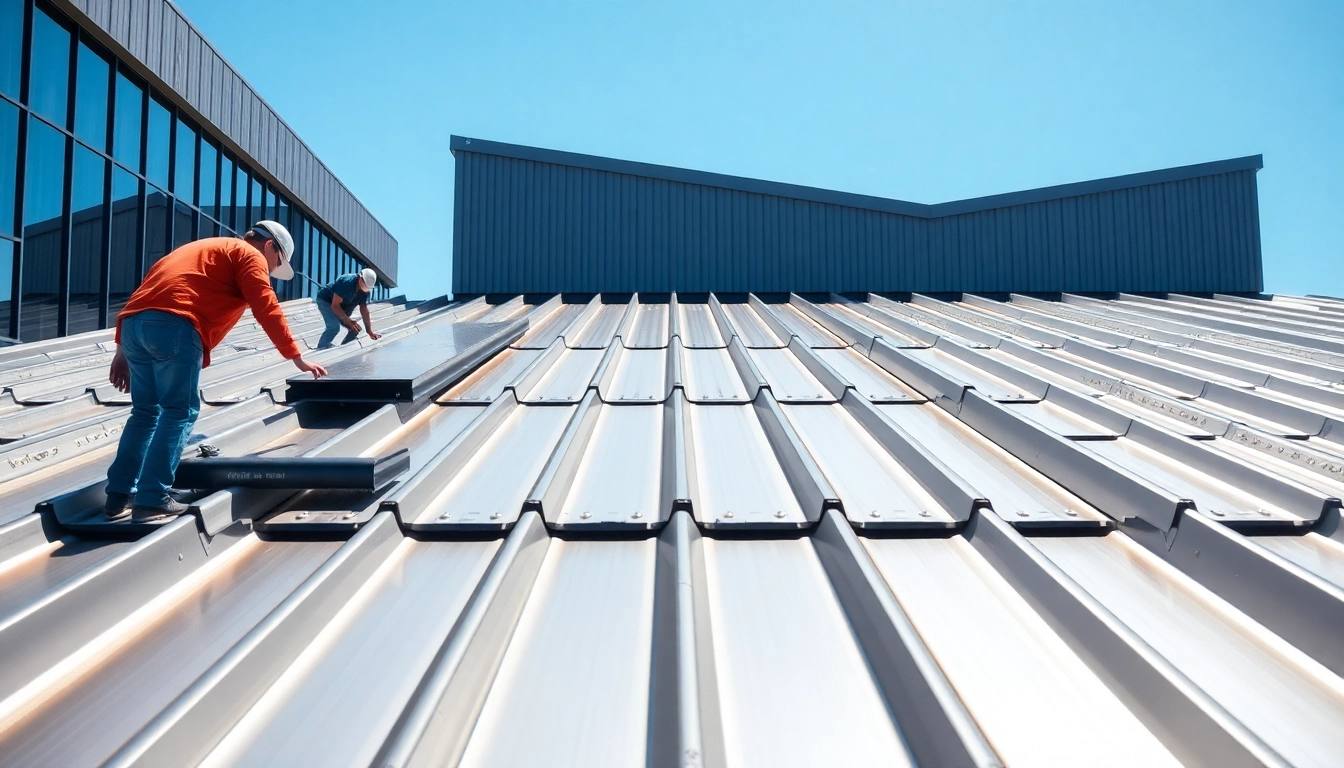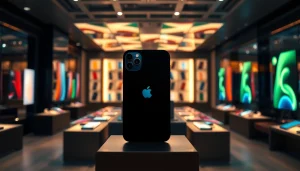1. Understanding Commercial Metal Roofing
A. What is Commercial Metal Roofing?
Commercial metal roofing refers to roofing systems specifically designed for commercial buildings, utilizing various types of metal materials, such as steel, aluminum, and copper. These roofs are engineered to withstand diverse environmental conditions, ensuring longevity and durability. Typically characterized by their distinct panel systems, commercial metal roofs can be installed in different styles, such as standing seam, corrugated, or flat panel configurations.
These roofing solutions not only provide structural integrity but also contribute to energy efficiency and aesthetic appeal. Many building owners today are exploring commercial metal roofing as a viable option, due to its increasing popularity in commercial settings.
B. Advantages of Using Metal Roofs for Commercial Buildings
The advantages of commercial metal roofs are manifold. Firstly, they offer exceptional durability. Metal roofs can last more than 50 years, significantly outpacing traditional roofing materials like asphalt shingles. Their resistance to severe weather conditions—including high winds, heavy rainfall, and snow—ensures that they remain intact and functionally effective long after their installation.
Another key benefit is energy efficiency. Metal roofing reflects solar heat, which can lead to significant energy cost savings, improving a building’s overall sustainability credentials. Furthermore, many metal roof materials are made from recycled materials, contributing positively to environmental impacts.
Maintenance is generally minimal compared to other roofing types. Most metal roofs require regular inspections and occasional cleaning but are less susceptible to issues like rot, mildew, and insect damage. This low-maintenance design can lead to lower long-term costs for commercial property owners.
C. Common Misconceptions About Metal Roofing
Despite the numerous benefits, several misconceptions persist regarding commercial metal roofing. One common myth is that metal roofs are excessively noisy during rain and hail. In reality, when installed correctly with appropriate insulation and underlayment, metal roofs can substantially dampen sound.
Another misconception is that metal roofs are prone to rust and corrosion. While older metal roofs did have issues with rust, modern metal roofing systems come with protective coatings that resist rust and extend the roof’s lifespan. Additionally, some customers fear that metal roofs generate excessive heat and are unsuitable for hotter climates. However, their reflective properties mean they can keep commercial buildings cooler, lending themselves well to green building practices.
2. Types and Materials for Commercial Metal Roofs
A. Overview of Metal Roofing Materials
Metal roofing for commercial applications comes in various types and materials. The most common include:
- Steel: The most widely used metal, steel roofing can come in galvanized or galvalume formats, providing both strength and longevity.
- Aluminum: Lightweight and corrosion-resistant, aluminum roofing is ideal for coastal areas due to its durability against saltwater.
- Copper: Although more expensive, copper offers a unique aesthetic appeal and lasts significantly longer than other materials.
- Zinc: Known for its longevity and less frequent maintenance needs, zinc is highly resistant to corrosion and self-repairs through a natural patina process.
B. Comparing Different Styles and Panel Types
When selecting a commercial metal roof, the style and panel type are crucial. Here are some popular options:
- Standing Seam: A contemporary choice, standing seam panels rise vertically from the roof and snap together. This style is highly waterproof and requires little maintenance.
- Corrugated Panels: Often used in agricultural settings, corrugated panels feature ridges that enhance strength. They’re generally more economical but equally functional.
- Flat Panels: Providing a sleek and modern look, flat panels can be integrated into green roof systems where additional insulation or vegetation layers are installed.
Choosing the right panel type should align with the building’s architectural design, climate, and intended use.
C. Energy Efficiency in Commercial Metal Roofing
Energy efficiency is a defining advantage of commercial metal roofing. The high reflectivity of metal surfaces plays a key role in these energy savings, redirecting solar radiation away from the building. This in turn decreases the heat absorbed and reduces the need for air conditioning systems, resulting in lower energy consumption.
Many manufacturers now offer Energy Star-rated products, which meet specific reflective and emissive criteria, further promoting energy conservation. Incorporating additional insulation beneath metal roofs can amplify these benefits and transform buildings into energy-efficient structures.
3. Installation Process for Commercial Metal Roofing
A. Key Steps in Installing Metal Roofs
The installation process for commercial metal roofing involves several critical steps:
- Preparation: Before installation, assess the existing roof structure, make necessary repairs, and ensure all safety precautions are in place.
- Layout: Create a comprehensive plan for panel layout, accounting for panel direction, overlap, and integration with existing building features.
- Underlayment: Install an appropriate underlayment that provides a moisture barrier to protect the roof structure.
- Panel Installation: Begin laying panels from one edge, securing as per manufacturer recommendations, typically utilizing hidden clips or exposed fasteners.
- Finishing Touches: Ensure all joints and transitions are sealed properly, and add flashing where necessary to guard against leaks.
B. Tools and Equipment Needed for Installation
Successful metal roofing installation requires various tools and equipment, including, but not limited to:
- Metal snips or shears for cutting panels
- Drills with appropriate bits for securing fasteners
- Lifting tools for handling heavy panels
- Safety harnesses and ropes for fall protection
- Measuring tools for precise panel layout and cutting
C. Safety Practices During Installation
Safety is paramount when installing commercial metal roofing. Proper training and use of protective equipment can help prevent accidents. Ensure all workers are familiar with safety protocols, including ladder safety, harnessing techniques, and regular inspections of work areas to eliminate potential hazards.
Conduct a site safety briefing before commencing work to discuss procedures and ensure everyone is on the same page. It’s critical to ensure that all tools are inspected before use and any spills or debris are promptly addressed to maintain a safe working environment.
4. Maintenance Tips for Longevity of Metal Roofs
A. Regular Inspection and Upkeep
Routine maintenance is essential for prolonging the lifespan of commercial metal roofs. Regular visual inspections can identify potential issues such as loose seams, rust, or debris buildup. Ideally, maintenance checks should occur at least twice a year: once in the spring and again in the fall.
Cleaning gutters and roof surfaces to remove vegetation, leaves, and other debris can help avoid water pooling, which can lead to significant damage over time. Consider developing a maintenance schedule that includes these checks and cleaning tasks to ensure your metal roof remains in excellent condition.
B. Common Issues and Solutions
Even with proper installation and maintenance, issues may arise. Some common concerns include:
- Rust: If you notice rust spots, it’s vital to clean the affected area and apply a rust-inhibiting primer and paint.
- Loose Flashing: Inspect flashing around joints and chimneys regularly, and make necessary adjustments or replacements if they become loose or damaged.
- Punctures: Check for punctures from debris or fallen branches. Repair any holes promptly to prevent water infiltration.
C. When to Hire a Professional
While many maintenance tasks can be performed by building owners or maintenance staff, certain situations warrant professional help. If roofing repairs require extensive work, involve high heights, or pose significant safety risks, hiring a qualified metal roofing contractor is advisable. Additionally, for issues with roof structure or integrity, it’s best to consult an expert to ensure the job is done safely and correctly.
5. Cost Analysis and ROI of Commercial Metal Roofing
A. Factors Influencing Cost of Metal Roofs
The cost of commercial metal roofing can vary based on several factors, including:
- Material Type: The choice between steel, aluminum, or copper significantly influences the overall cost.
- Roof Size: Larger roofs will inherently cost more, not only for materials but also for labor.
- Installation Complexity: Roofs with unique designs, angles, or additional features can increase labor costs.
B. Long-Term Savings and Benefits
Although the initial investment for metal roofing may be higher compared to traditional materials, the long-term savings are substantial. Metal roofs typically enjoy longer lifespans, lower maintenance costs, and energy savings. Over the years, these factors contribute to a positive return on investment (ROI), making metal roofs a cost-effective solution for commercial establishments.
Many commercial property owners experience lower insurance premiums due to the enhanced durability and fire-resistance capabilities of metal roofs, further emphasizing the financial advantages.
C. Financing Options for Commercial Roofing Projects
To assist in managing the costs of commercial metal roofing projects, a variety of financing options are available. Many roofing companies offer payment plans or financing deals tailored to commercial clients. Additionally, seeking options through banks or credit unions can help spread the cost over time. Some federal and state grants may also be available for energy-efficient upgrades, making it more feasible to invest in sustainable metal roofing solutions.

